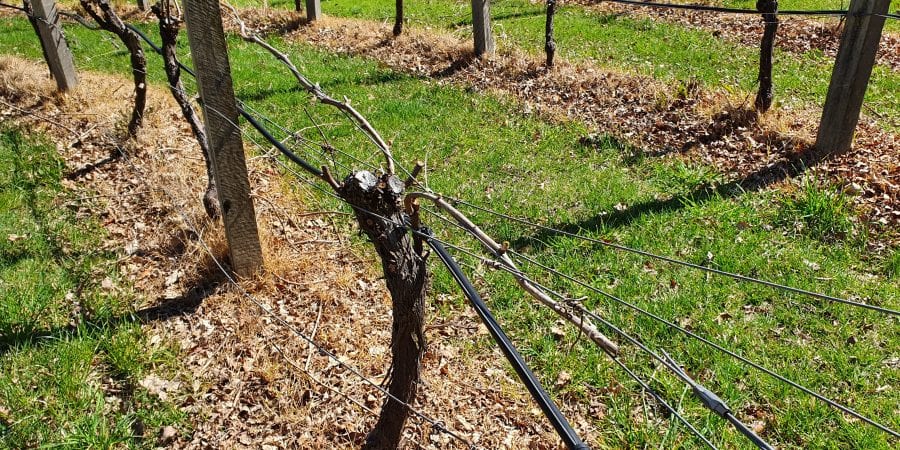How is it Spring already?!
And how does it’s appearance always take me by surprise?! Every. Single. Time.
It occurred to me last week, that we’ll have to start thinking the next growing season soon. But not too soon.
Then, the following day, the first CropWatch email for the season arrived in my inbox!
Apparently our most advanced vines here in the Hills are already at budburst!
Just look at them doing their thing (while I’m still huddled around the fire in my flannelette pyjamas and ugg boots!)…
Most Advanced
E-L 4 Budburst, leaf tips visible.
Macclesfield Chardonnay

Least Advanced
E-L1 Winter bud
Sauvignon Blanc

So, what does this season have in store for us?
2023/24 Season Outlook
Our last three seasons here in the Hills have been under the influence of La Niña. This has resulted in cold and wet starts to the growing season, together with relatively mild summers.
This season, though, the Bureau of Meteorology outlook indicates that there is an increasing likelihood (currently at 70%) for the development of El Niño conditions associated with drier and hotter weather.
Given what’s been happening during summer in the Northern Hemisphere (hot, dry, fires, etc.) growers are currently planning for similar conditions here. Just in case.
Fingers crossed it turns out to be simpler than anticipated.
But before we start looking too far ahead, let’s have a quick look at what the vines get up to over winter.
(I’ve had this topic on my list for a while now and thought I had heaps of time up my sleeve to write it. Clearly not!)
Loving our blog? Sign up for weekly updates straight to your inbox…
The life cycle of a vine is a full 12 month affair.
Although it may seem that nothing is happening with the grapevine during winter, that’s not exactly true.
Entering Dormancy
As winter takes hold, days grow shorter and temperatures drop.
Grapevines respond to the changing environment by entering a period of dormancy. This is a survival mechanism that protects the vines from the harsh conditions of winter.
The first noticeable change is the shedding of leaves. The once-lush vineyards transition from a blanket of green and gold to barren branches.
Accumulation of Energy
Before the last leaf falls, grapevines store energy for the upcoming growing season. This energy is primarily stored in the form of carbohydrates in the roots and woody parts of the vines.
As the vineyards go dormant, the focus shifts from the aerial parts of the plant (leaves, etc.) to its underground systems, where reserves are accumulated and preserved.
This stored energy plays crucial role in the spring when new growth begins.
Frost Resistance
Winter exposes grapevines to the risk of frost, which can be detrimental to their survival.
To counteract this threat, grapevines undergo physiological changes that enhance their ability to withstand freezing temperatures.
The cell walls of the vines undergo alterations that prevent ice crystals from forming within the cells. Additionally, the grapevines are able to produce compounds that act as antifreeze agents, safeguarding delicate tissues from damage.
Pruning and Vineyard Management
Winter isn’t the time for growers to put their feet up. It can be a busy time as pruning becomes the focus.
Careful pruning encourages optimal fruit production and maintains the health of the grapevines. It’s a delicate balance between removing excess growth and preserving the canes necessary for the upcoming season.
Reaping the Benefits
As winter turns into spring (and some of us are still hibernating), grapevines gradually come out of dormancy.
The stored energy reserves accumulated during winter now fuel the development of new buds, shoots, and leaves.
This period is a critical phase in the grapevine’s annual cycle, as it sets the stage for the growth and eventual fruiting which will come in the warmer months.
